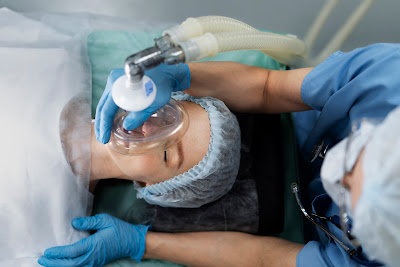Unmasking the Global Diabetes Epidemic: Understanding the dangers of “The Sweet Tooth"
EPIDEMIOLOGY OF DIABETES MELLITUS
Diabetes mellitus is a clinical syndrome with many causes, which is characterized by the presence of hyperglycemia (mellitus being Latin for ‘sweet’). Type 2 diabetes accounts for around 90% of cases, while type 1 diabetes accounts for most of the remainder. All types of diabetes is consequences of relatively or absolute insulin deficiency. Therefore, a Fellowship in Diabetes Mellitus is considered one of the most relevant fellowships around the world.
Together both the diabetes type 1 and type 2 are holding similar hyperglycemic complications but their etiology and pathophysiology are different.
In type 1 diabetes, there is an absolute deficiency of insulin because of an immune-mediated destruction of insulin-producing β cells in the pancreatic islets of Langerhans.
Contrast, in type 2 diabetes, concentrations of circulating insulin are typically elevated, but there is a relative deficiency of insulin because there is reduced sensitivity to insulin in peripheral tissues (because of obesity) and the β cells cannot make ample insulin to overcome this ‘insulin resistance’.
PREVALENCE AND DEATH RATEDiabetes carries a heavy personal burden for those affected as well as high financial costs to health-care systems and society at large scale.
In year 2017, diabetes causes 4 Million death globally and healthcare expenditure of diabetes was calculated globally around to be 60,51,51,16,500 Indian rupees or 10% of total healthcare expenditure.
The prevalence of diabetes is rising. Globally, it is estimated that 463 million people had diabetes in 2019 (9.3% of the world adult population), approximately 90% with type 2 diabetes. This figure is expected to reach700 million by 2045.
Prevalence is highest in middle eastern and low eastern parts of Africa and varying around the world. According to ethnicity and environmental factors (obesity, diet, low - habitual physical activity, urbanisation and economic development).
A pronounced rise in the prevalence of type 2 diabetes occurs in migrant populations from low-income to industrialized countries. In many high-income countries, type 2 diabetes is no longer rare in children and adolescents, particularly in people of South Asian countries because of these countries, increased survival is a factor underlying rising prevalence.
Type 1 diabetes is also subject to geographical variation and is generally more prevalent in countries closer to the polar regions. Finland for instance, has the highest rate of type 1 diagnosis per year at >60 per 100 000 of the population, whereas in China and Venezuela the incidence is only 0.1 per 100 000. The incidence of type 1 diabetes is also increasing: between 1989 and 2013, 3.4 % more children were diagnosed worldwide each year. Type 1 diabetes is more common inpeople of European descent than in other ethnic groups and, for reasons that are not understood, more people are diagnosed in the winter months more as compare to others.
MICRO AND MACRO VASCULAR COMPLICATIONIn Eyes leads to Retinopathy, Cataract ultimately to glaucoma.
In Kidneys due to high blood glucose leads to high blood pressure and affecting nephrons leading to nephropathy.
In Nerves hyperglycemia damages peripheral nerves system this will results in pain and numbness. Feet wounds will go undetected and will left untreated ultimately leading to gangrene.
Macrovascular complications:In Brain there will be increased risk of stroke and cerebrovascular disease including transient ischemic attacks, cognitive impairment etc.
In Heart due to high blood pressure and insulin resistance there is increased risk of heart-attacks and coronary heart disease.
In Extremities peripheral narrowing of blood vessels will leads to peripheral neuropathy hands and feet wounds are likely to heal slowly and will lead to certain complications like gangrene and limb amputations.
Join the Medvantage Fellowship in Diabetes Mellitus to get a deeper and more precise understanding of diabetes and it's compollications.




Comments
Post a Comment